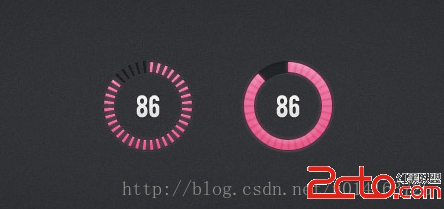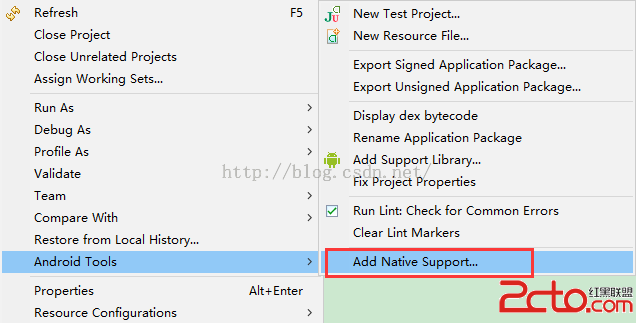編輯:關於Android編程
本文所述實例源自一個項目開發中的登錄驗證功能,具體的要求就是,在Android端輸入用戶名和密碼,在服務器端驗證MySQL數據庫中是否有此用戶,實現之前當然首要的是,如何使Android端的數據發送到服務器端,具體的實現方法如下:
服務器端:ManageServlet.java代碼如下:
public class ManageServlet extends HttpServlet {
public void doGet(HttpServletRequest request, HttpServletResponse response)
throws ServletException, IOException {
request.setCharacterEncoding("utf-8");
response.setCharacterEncoding("utf-8");
String name = request.getParameter("name");
String password = request.getParameter("password");
System.out.println("用戶名:"+name+" 密碼:"+password);
}
public void doPost(HttpServletRequest request, HttpServletResponse response)
throws ServletException, IOException {
}
}
在這裡實現的僅僅是把用戶端的數據在控制台打印出來,相信學過jsp開發的大神,剩下的數據驗證應該不在話下,在此不再贅述。
接下來就是Android端了:
主activity:MainActivity.java頁面代碼如下:
public class MainActivity extends Activity {
private EditText textname = null;
private EditText textpassword = null;
private Button button = null;
@Override
protected void onCreate(Bundle savedInstanceState) {
super.onCreate(savedInstanceState);
setContentView(R.layout.activity_main);
textname = (EditText)findViewById(R.id.name);
textpassword = (EditText)findViewById(R.id.password);
button = (Button)findViewById(R.id.button);
button.setOnClickListener(new mybuttonlistener());
}
class mybuttonlistener implements OnClickListener{
boolean result=false;
String name;
String password;
public void onClick(View v) {
try {
name = textname.getText().toString();
name = new String(name.getBytes("ISO8859-1"), "UTF-8");
password = textpassword.getText().toString();
password = new String(password.getBytes("ISO8859-1"), "UTF-8");
} catch (UnsupportedEncodingException e1) {
// TODO Auto-generated catch block
e1.printStackTrace();
}
try {
result = NewsService.save(name,password);
} catch (Exception e) {
// TODO Auto-generated catch block
e.printStackTrace();
}
if(result){
Toast.makeText(MainActivity.this, R.string.ok, Toast.LENGTH_SHORT).show();
}else{
Toast.makeText(MainActivity.this, R.string.error, Toast.LENGTH_SHORT).show();
}
}
}
}
布局文件如下:
<RelativeLayout xmlns:android="http://schemas.android.com/apk/res/android"
xmlns:tools="http://schemas.android.com/tools"
android:layout_width="match_parent"
android:layout_height="match_parent"
tools:context="${relativePackage}.${activityClass}"
>
<LinearLayout
android:layout_width="fill_parent"
android:layout_height="fill_parent"
android:orientation="vertical"
>
<TextView
android:layout_width="wrap_content"
android:layout_height="wrap_content"
android:text="@string/name" />
<EditText
android:id="@+id/name"
android:layout_width="fill_parent"
android:layout_height="wrap_content"
android:hint="@string/playname"
android:singleLine="true"
/>
<TextView
android:layout_width="wrap_content"
android:layout_height="wrap_content"
android:text="@string/password" />
<EditText
android:id="@+id/password"
android:layout_width="fill_parent"
android:layout_height="wrap_content"
android:password="true"
android:hint="@string/playpass"
android:singleLine="true"
/>
<Button
android:id="@+id/button"
android:layout_width="fill_parent"
android:layout_height="wrap_content"
android:onClick=""
android:text="@string/submit"
/>
</LinearLayout>
</RelativeLayout>
用於向服務器端發送數據的service(NewsService):
public class NewsService {
/**
* 登錄驗證
* @param name 姓名
* @param password 密碼
* @return
*/
public static boolean save(String name, String password){
String path = "http://<span ><strong>192.168.1.104</strong></span>:8080/Register/ManageServlet";
Map<String, String> student = new HashMap<String, String>();
student.put("name", name);
student.put("password", password);
try {
return SendGETRequest(path, student, "UTF-8");
} catch (Exception e) {
// TODO Auto-generated catch block
e.printStackTrace();
}
return false;
}
/**
* 發送GET請求
* @param path 請求路徑
* @param student 請求參數
* @return 請求是否成功
* @throws Exception
*/
private static boolean SendGETRequest(String path, Map<String, String> student, String ecoding) throws Exception{
// http://127.0.0.1:8080/Register/ManageServlet?name=1233&password=abc
StringBuilder url = new StringBuilder(path);
url.append("?");
for(Map.Entry<String, String> map : student.entrySet()){
url.append(map.getKey()).append("=");
url.append(URLEncoder.encode(map.getValue(), ecoding));
url.append("&");
}
url.deleteCharAt(url.length()-1);
System.out.println(url);
HttpsURLConnection conn = (HttpsURLConnection)new URL(url.toString()).openConnection();
conn.setConnectTimeout(100000);
conn.setRequestMethod("GET");
if(conn.getResponseCode() == 200){
return true;
}
return false;
}
}
因為需要連接網絡,一定要在AndroidManifest.xml進行網絡權限配置:
<uses-permission android:name="android.permission.INTERNET"/>
至此基本已經完成Android向服務器端發送數據,希望本文實例對大家的Android程序設計有所幫助。
 Android EventBus 3.0.0 使用總結
Android EventBus 3.0.0 使用總結
前言EventBus框架 EventBus是一個通用的叫法,例如Google出品的Guava,Guava是一個龐大的庫,EventBus只是它附帶的一個小功能,因此實際項
 Android 自定義學習(5)自定義Progressbar
Android 自定義學習(5)自定義Progressbar
自定義View學習的最後一期了,先上效果圖。 相信大家心中都有自己的實現方法,這裡就貼上我的方法以供參考。/** * 刻度畫筆 */ private P
 AndroidStudio如何快速制作.so
AndroidStudio如何快速制作.so
之前寫過一篇Eclipse制作.so的文章,使用的是GNUstep模擬Linux環境,過程現在看來是想相當麻煩,後來發現一個簡單的方法就是通過項目右鍵添加Native S
 Android EventBus的初步使用
Android EventBus的初步使用
項目使用的技術呢,說白了,就是將要傳遞的event(一個Object對象,可任意自定義),發送到公共的組件EventBus中進行存儲, 在通過